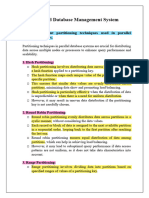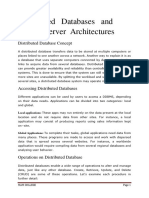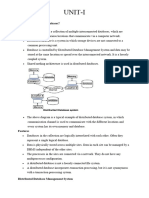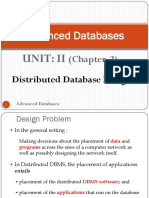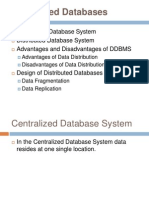0% found this document useful (0 votes)
71 views7 pagesDatabase Fragmentation Guide
The document discusses different types of fragmentation in distributed databases including horizontal, vertical, and hybrid fragmentation. Horizontal fragmentation divides a table into smaller tables based on attributes. Vertical fragmentation divides a table into subsets based on columns. Hybrid fragmentation combines horizontal and vertical fragmentation.
Uploaded by
ishasidana786Copyright
© © All Rights Reserved
We take content rights seriously. If you suspect this is your content, claim it here.
Available Formats
Download as PDF, TXT or read online on Scribd
0% found this document useful (0 votes)
71 views7 pagesDatabase Fragmentation Guide
The document discusses different types of fragmentation in distributed databases including horizontal, vertical, and hybrid fragmentation. Horizontal fragmentation divides a table into smaller tables based on attributes. Vertical fragmentation divides a table into subsets based on columns. Hybrid fragmentation combines horizontal and vertical fragmentation.
Uploaded by
ishasidana786Copyright
© © All Rights Reserved
We take content rights seriously. If you suspect this is your content, claim it here.
Available Formats
Download as PDF, TXT or read online on Scribd
/ 7







